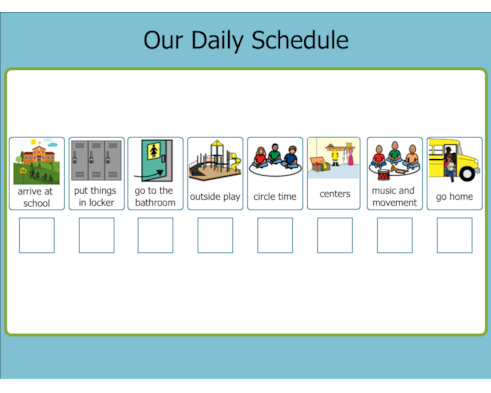Application: Bloomz
Price: Free
Knowledge
The app is called Bloomz. It is a free app that allows you to have easy communication with your students parents. The app is designed to help teachers be efficient in their communication with parents. This app has SO many great features! First, it allows the teacher to select the school they are apart of and create their own classroom. It also allows you to make a portfolio for each student!
Each student portfolio created as the ability to add pictures, assignments for class, message parents, log a child's behavior/daily activities, etc.
This pictures below are showing that Ms. Emily created a class and the activity was self portraits. She added Nolan C.'s to his portfolio.
The pictures shown below a students behavior and daily activities. This app is fantastic for a daycare as it lets you log bottle times, lunch, and snack. It also will keep track of bowel movements and diaper changes. Bloomz keeps track of a child's sleeping and wake times. For preschoolers or older children, this app can log a student's art time, a injury or incident, music time, medicine given, etc. All the features can be shared with the child's parents.
Bloomz has its own built in calendar so the teacher can add reminders, important school events, and due dates for class assignments.
The teacher can store photos, albums and documents to make it easier for parents to access them. For older grades, being able to share photos and documents could be a great tool for ASSESSMENT. Sharing a child's work will show the parents where the child is struggling and what they need help with.
Application
I would love to try this app in my preschool classroom. Parent-teacher communication is very important to a students performance in school. Having a good relationship with your child's teacher can benefit all parties involved: parent, child, and teacher. Sometimes, it can be hard to find time to sit down with each individual parent. It is also hard to talk at drop off and pick up due to multiple parents being around.
I know for my school, drop offs and pick ups are extremely chaotic. We also only have parent/teacher conferences twice a year. And, thought we encourage parents to email us if they have questions/concerns, it can be tricky to find time to meet.
Bloomz would help alleviate many of our struggles we face with parent-teacher communication at my school. The part, I think, we could benefit mostly from is creating a student portfolio for our students and sharing photos and documents will the parents that shows their child's progression in the classroom. I also love the behavior/daily activities logging system.
Reflection on Practice
I think this app would help alleviate lots of stress teachers face when trying to coordinate parent/teacher communication. However, I also think logging EVERY SINGLE THING a child does takes a lot of time and effort. Most teachers do not have extra time to sit down at a computer or iPad and log every child's daily activities. For me, I would choose the most important things to share - photos and documents. I think that unless you are a home daycare and have 5 children or less, having a classroom of 20 students isn't realistic to log their behavior and daily activities. I do, however, really like the idea that you can use this app to document a child's work and send it to the parents. All in all, I think that Bloomz is a great app and more teachers should try it!


































